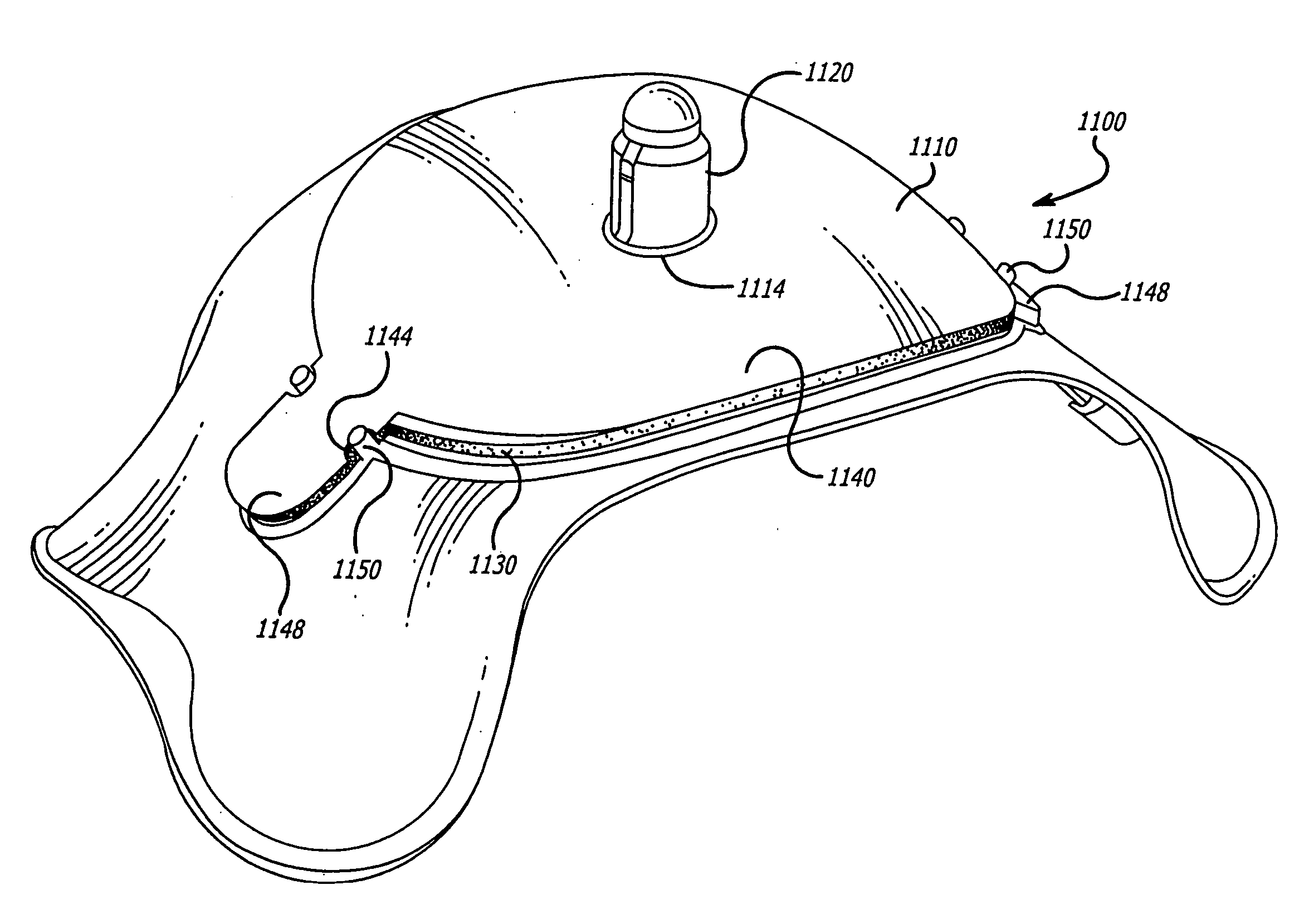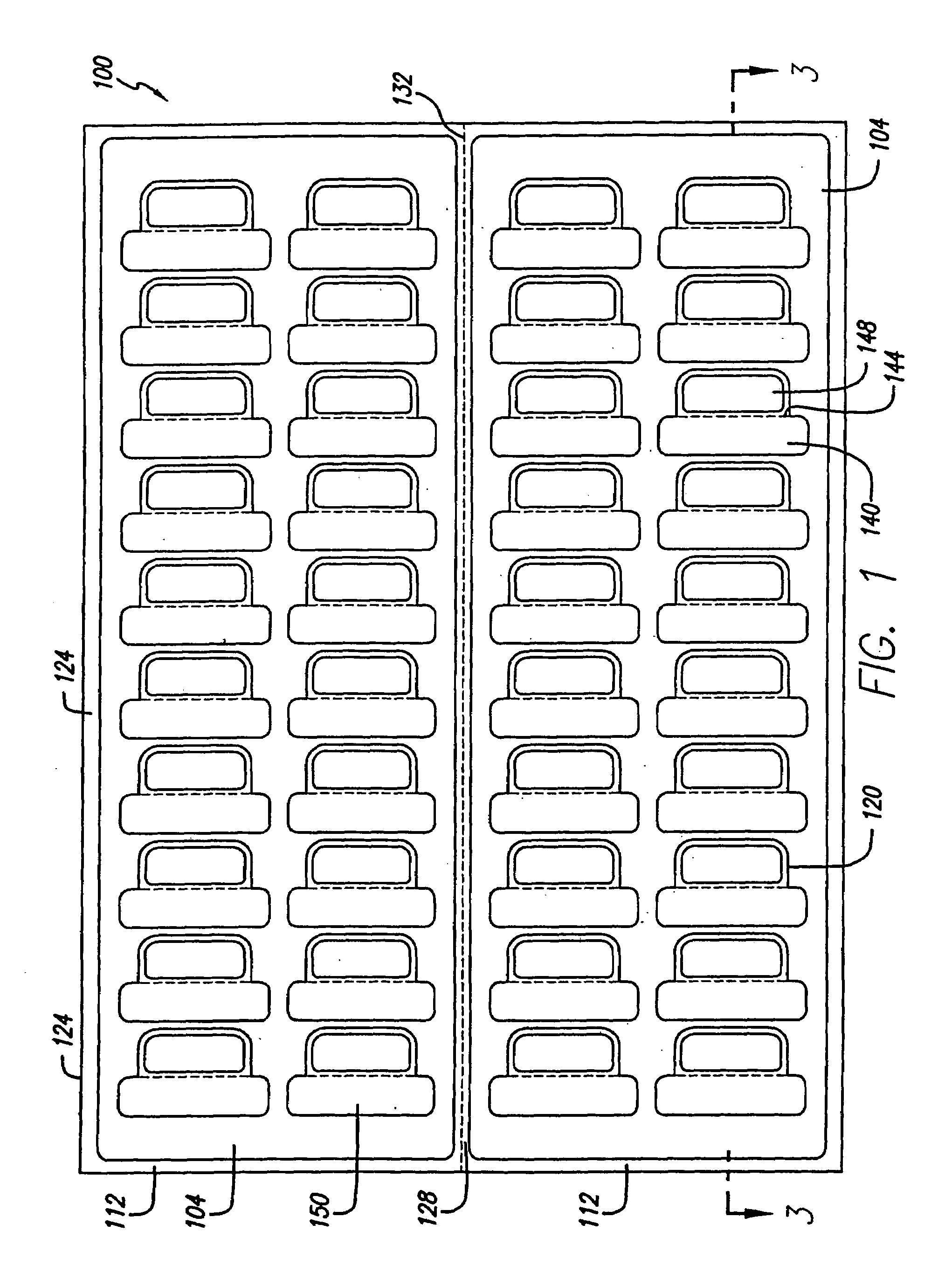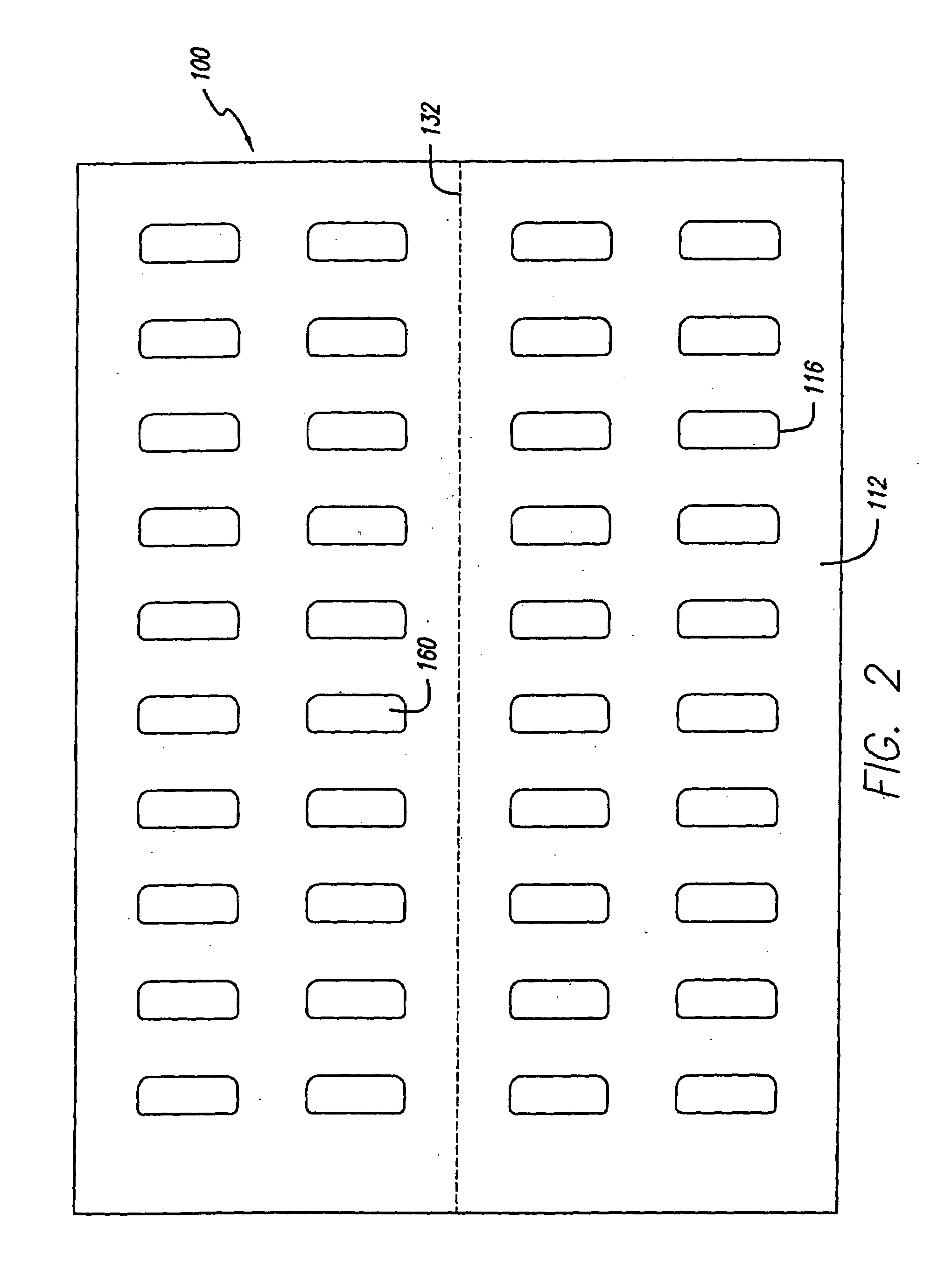Method for applying labels
a label and construction technology, applied in the field of label sheet construction, can solve the problems of loss of adhesive tack, poor adhesion to the compact disc in the contaminated area, time-consuming and laborious application of labels, etc., and achieve the effect of facilitating the application of labels
- Summary
- Abstract
- Description
- Claims
- Application Information
AI Technical Summary
Benefits of technology
Problems solved by technology
Method used
Image
Examples
fourth embodiment
[0087]FIG. 20, shown generally at 400, is an improvement over the embodiment of FIG. 13, and a number of small differences are apparent. It similarly includes facestock 404, liner sheet 408, adhesive, and cut lines to form labels 416, strips, etc. One of the differences is that there is an increased offset between the face and liner cuts. Also, there are more rounded corners, additional ties are provided on the faces, additional ties are provided on the liners and additional rows of labels are provided. The face cuts are provided to relax the post-laser curl in laser printers.
[0088]Referring to FIG. 21, preferred dimensions in inches are: 430a (0.063), 430b (1.251), 430c (R0.125 typical), 430d (0.750), 430e (0.438 typical), 430f (0.219), 430g (0.547), 430h (1.656 typical), 430i (2.031 typical), 430j (0.824 typical (this half of sheet only)), 430k (0.006 first row 0.008 second, third row; 0.010 fourth row tie typical (this half of sheet only)), 430l (0.187 ref.), 430m (0.094 typical)...
embodiment 1400
[0116]FIG. 48 shows an alternative sheet embodiment 1400 where the CD label assembly is located symmetrically on the sheet. Tabs 1410 on either side of the label 1420 are formed. The liner section 1420 of the tab is directly underneath the facestock portion 1430 of the tab so that by pushing the liner section, the facestock section partially separates from the sheet. The facestock section 1430 is attached to the compact disc label 1420 by perforations 1440. Lifting the facestock portion of the tab with the attached liner section of the tab lifts the compact disc label 1420 from the liner sheet. The opposed tab with its liner section can be lifted prior to the removal of the compact disc label 1420 or it can be left in and will pull the section of the opposite tab up during removal.
[0117]Referring to FIG. 49, an alternative label sheet embodiment is shown generally at 1500 wherein the alignment tab 1510 which is a perforation cut through both the facestock and the release liner and i...
PUM
| Property | Measurement | Unit |
|---|---|---|
| basis weight | aaaaa | aaaaa |
| adhesive | aaaaa | aaaaa |
| shape | aaaaa | aaaaa |
Abstract
Description
Claims
Application Information
 Login to View More
Login to View More - R&D
- Intellectual Property
- Life Sciences
- Materials
- Tech Scout
- Unparalleled Data Quality
- Higher Quality Content
- 60% Fewer Hallucinations
Browse by: Latest US Patents, China's latest patents, Technical Efficacy Thesaurus, Application Domain, Technology Topic, Popular Technical Reports.
© 2025 PatSnap. All rights reserved.Legal|Privacy policy|Modern Slavery Act Transparency Statement|Sitemap|About US| Contact US: help@patsnap.com



